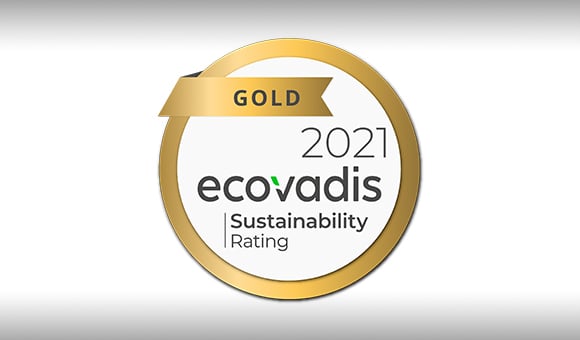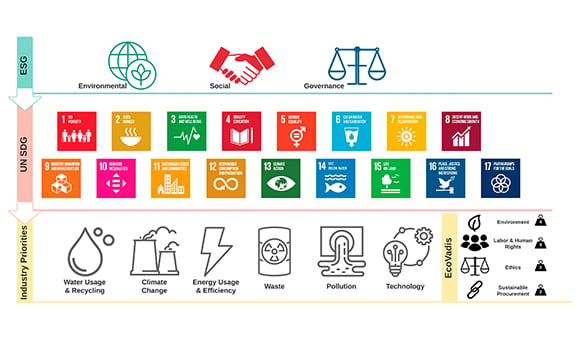For the last two decades, companies in almost every industry have realized the importance of developing sustainability strategies that address how key Environmental, Social and Governance (ESG) issues are managed. Often, and with all good intentions, these businesses look inward to develop their strategies, evaluating their own processes and tapping into their own talent pools for ideas and solutions.
While this self-evaluation is important, it’s equally important to look outward — to align corporate sustainability initiatives with those of external stakeholders, including customers. Indeed, when sustainability is done well, it creates a win-win-win scenario in which the solution provider, the provider’s customers and the larger community benefit.
This was a critical driver for Solenis when we set out to incorporate sustainability into our business with more rigor, transparency and accountability. To do this well — to do this right — we knew we needed to account for the voices of our customers when advancing our sustainability agenda. So, in 2020, Solenis initiated a research project to study how sustainability initiatives were impacting the industries we serve. In particular, we were interested in learning how our customers defined their sustainability goals, how they measured their performance and how they translated sustainability into financial value.
In this article, we will review the findings around the first question — how customers define their sustainability goals. Subsequent blog articles will focus on performance metrics, the financial value of sustainability investments and, finally, how Solenis products and services can be better aligned with customer sustainability needs.
Research Results
In our research, Solenis analyzed a total of 21 companies, 13 of which produce packaging and specialty papers, four of which produce tissue and towel products, and four of which produce both. We evaluated sustainability messaging on their websites, reviewed sustainability reports if they were available, and analyzed all published sustainability goals and targets. We also conducted interviews with sustainability leaders at these companies to collect qualitative data about their successes, challenges and best practices.
A few highlights of the research are described below.
Established Frameworks
Most of our customers and competitors have turned to established frameworks to provide structure and credibility to their sustainability efforts. For example, the United Nations Sustainable Development Goals (UN SDGs) have become important benchmarks for how companies align their sustainability strategies with the goals of a better global society. Established in 2015, the UN SDGs built on the Millennium Goals of 2000, which were designed to reduce extreme poverty by 2015. The seventeen SDGs cover a wide range of aspects that affect sustainability, and they act as a charter for companies, governments, and nonprofit organizations worldwide to build policies and best practices using a common set of goals.
Industry Priorities
Our research also identified six industry priorities. These six priorities, which map to one or more of the UN SDGs, were built on knowledge surrounding sustainability trends across the industry, as well as standards set through the Sustainability Accounting Standards Board (SASB), an independent nonprofit organization that sets standards to guide the disclosure of financially material sustainability information by companies to their investors.
Each of these priorities is described in detail below.
- Water Usage and Recycling — As defined in the SASB Sustainability Standards, companies can cost-effectively recycle water, improve production techniques to lower water intensity, and ensure compliance with water-effluent regulations. Reducing water use and consumption through increased efficiency and other water management strategies may lead to lower operating costs over time and may mitigate financial impacts of regulations, water supply shortages, and community-related disruptions to operations.
- Climate Change — Climate change is becoming a major threat to businesses, national security, and global security. According to a survey reported by the Thomson Reuters Foundation, over half of respondents believe climate change is a “major threat,” and this belief continues to increase as supply chains, human productivity, and innovation are put at risk.
- Energy Usage and Efficiency — The manner in which a company manages its energy efficiency, its reliance on different types of energy and the associated sustainability risks, and its ability to access alternative energy sources is likely to mitigate the impact of energy cost variability.
- Waste — Waste management strategies include reduced generation, effective treatment and disposal, and recycling and recovery, where possible. Such activities, while requiring initial investment or operating costs, may lower companies’ long-term costs and mitigate the risk of remediation liabilities or regulatory penalties.
- Pollution — Companies that can cost-effectively reduce air emissions can improve operational efficiency, benefit from lower costs, and mitigate regulatory risk. In the pulp and paper segment, for example, companies can benefit by optimizing recycled fiber use to balance their environmental and economic trade-offs. Companies can reduce pollutants in the pulping process by using secondary water treatment, electrostatic precipitators, and scrubbers.
- Technology — Companies that use innovative technology to improve processes and competitively differentiate can also improve financial performance and enhance brand value. Although SASB does not cite any quantitative metrics for measuring technological impacts, it provides qualitative targets for how technological advances could be used, including: use of technologies that offer reduced water consumption and increased water recycling; use of tools and technologies to analyze water use, risk, and opportunities; and long-term strategies that include process redesigns and technological innovations that lower withdrawal of fresh water.
Ratings
Finally, our research indicated that many of our customers boast high ratings from or involvement in other sustainability initiatives such as EcoVadis, Together for Sustainability, the Ellen MacArthur Foundation, the Science Based Targets initiative, the UN Global Compact, and CDP, among others. As sustainability becomes an even greater focus in the global economy, rating systems, such as EcoVadis, are becoming critical measures for customers to evaluate suppliers. Solenis, for example, received gold status from EcoVadis in 2019 and then again in 2021, an honor reserved for the top five percent of companies rated.

A Viable Taxonomy
Based on this research, Solenis arrived at a system that effectively maps its ESG strategy to priorities that are most meaningful to our industry and our customers. The diagram below shows this taxonomy, which aligns the six identified priorities with UN SDGs and establishes EcoVadis as a credible rating system to demonstrate performance. Note that while all Goals are essential, certain Goals — such as Clean Water and Sanitation, Responsible Consumption and Production, and Climate Action — rise to the surface as priority sustainable development goals for Solenis as a chemical supplier to water-intensive operations.

The important thing here is not the taxonomy per se but how it was built — firmly on a foundation of customer and industry data. This ensures that we don’t build a sustainability strategy to satisfy our own internal needs but one that satisfies the needs of the businesses we serve. Indeed, this is the inherent promise of our mission, which is to strive to be each customer’s most trusted supplier by solving problems with the right people, the right experience and the right technology.
This is the first blog in a series focused on how Solenis prepared to advance its sustainability strategy. In our next entry, we explore how we evaluated our product and service offerings to be better aligned with sustainability.
